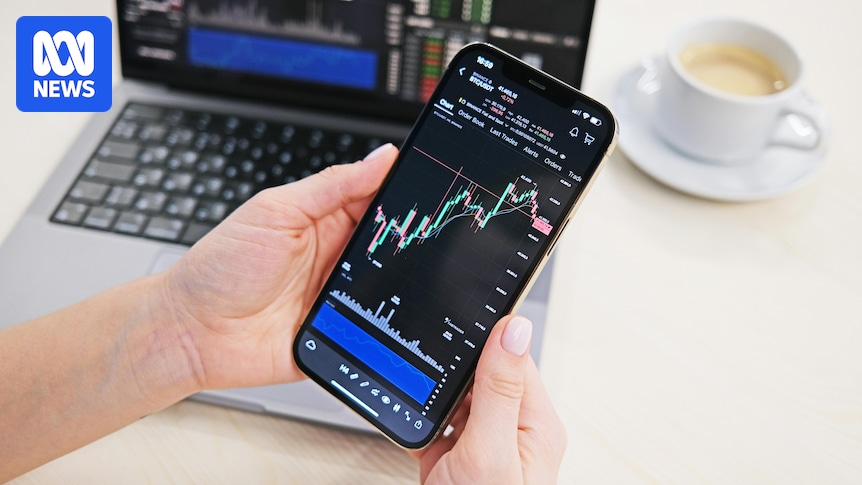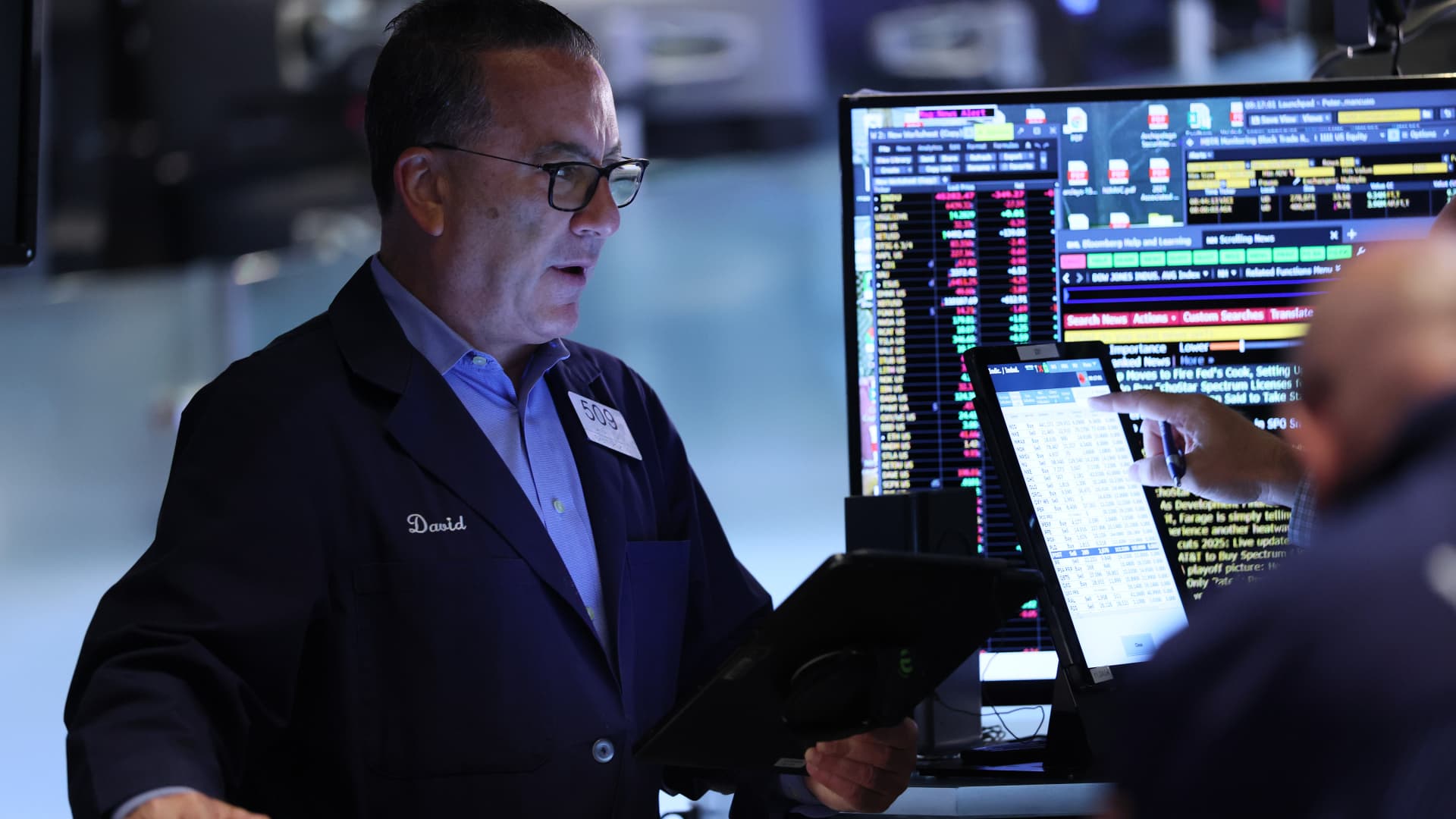Analysts say global financial markets are entering a euphoric but potentially dangerous speculative phase.
Such phases are typically characterised by investor mania for so-called meme stocks, made popular on the share market by social media posts.
But investors are also chasing after cryptocurrencies, gold and small-cap stocks, or stocks with relatively low prices.
Adelaide woman Lisa, who only wants to use her first name for privacy reasons, buys so-called penny stocks in small companies trading on the share market.
She trades stocks in the resources, information technology and pharmaceuticals sectors.
Lisa began investing in 2001 with just $500. (Supplied)
“They interest me because they sometimes have a better opportunity for growth, in that the price can go up a lot more substantially than something that’s already priced quite highly,”
she said.
“And also because of their small nature, often they’re overlooked by the larger managed funds, superannuation funds, for example.”
Lisa first bought $500 worth of shares in 2001, and now has a $100,000 share market portfolio returning 18 per cent per annum.
A typical stock market return, according to analysts, is anywhere between 7 and 10 per cent per annum.
Lisa shares trading ideas with other investors on several social media platforms.
“One of my favourites would be Straw Man, which is a private investors club where people share ideas of companies that they’ve researched,” she said.
“I also look at a couple of others like Hot Copper, Inside Trader, The Motley Fool and MSN News, occasionally, just to give me ideas, and then I’ll take those ideas and do my own research.”
Retail investors bought up big in GameStop stocks in 2021. (Unsplash: Michael Förtsch)
The GameStop phenomenon
In January 2021, retail investors bought American meme stock GameStop, after positive reviews of the company went viral in an online investing forum on Reddie .
Marcus Today senior portfolio manager Henry Jennings said this type of frenzied trading activity was popping up again.
“We’re back with the meme stocks again, whereby a group of retail investors or punters … will target stocks that are heavily shorted, looking for a catalyst,”
he said.
“Shorting” stocks is when big investment firms borrow stocks they see as overpriced, only to sell them.
They buy the stock after the share price falls, and return it to the owner, having made a profit.
Loading…
GameStop was being heavily shorted in the market in 2001, so when retail investors bought it up, the big investment firms started to lose money on their “shorts” as the price stopped falling and began rising.
“And if there’s enough of them, do that at one particular time, they can push stocks to outrageous gains and outrageous moves,” Mr Jennings said.
“What we’re seeing, speculation obviously in Bitcoin and crypto … is now morphed and transformed into the meme stocks again,”
he said.
“So it is, I guess, a sign of irrational exuberance to some extent.”
Roger Montgomery, who runs Montgomery Investment Management, is also seeing meme-stock mania.
“Last week we saw, for example, the share prices of Wendy’s, GoPro and others jump,” he said.
“I think Krispy Kreme was the other one to jump by as much as 80 per cent just in a couple of days.
“That’s telling you that things are getting a little bit hot again.”
‘Optimism is high’
Mr Jennings warned investor euphoria is taking hold again in financial markets, making “Star Entertainment look like a Sunday afternoon bongo club.”
“I guess primarily the reason is the animal spirits are running pretty hot at the moment,” he said.
“You know, we’ve got markets around the world at all-time highs.
“Despite the news from tariffs, the optimism is high, but Trump is making America great again and greed is good.
While that may sound concerning, Mr Montgomery said investors were buoyed by the amount of cash coming from central banks.
Countries like China have recently injected large amounts of cash into the market. (Reuters: Jason Lee)
He said this was supporting stocks and other financial markets’ assets.
“The Chinese Central Bank has injected something like 10 trillion renminbi into the market over the last six months,” Mr Montgomery said.
“And because there could be a slowing economy from Trump’s tariffs, the US Federal Reserve is expected to engage in Quantitative Easing [money printing], or more Machiavellian versions of that, and inject more liquidity into the market as well.”
Risk abounds
There is, however, no shortage of risk facing investors across the globe.
Analysts point to problems from US President Donald Trump’s Big Beautiful Bill, uncertainty around global tariffs, and the health of China’s economy — all of which have the potential to drag markets down again.
Market optimism is currently high, despite US President Donald Trump’s wide-ranging global tariffs. (AP: File)
Rising bond yields, which can hurt stock prices, are also a concern.
But Mr Jennings said the risks investors did not see presented the most danger to financial markets and the economy.
“It’s not really the risks that you can see that are going to trap us and trip us up,” he said.
“It’s the ones that you can’t see.
“It’s the 70 per cent of the iceberg below the water line that kills the Titanic, not the one that you ram head-on.“
Locally, Australian companies are yet to report their full-year earnings for the 2024/25 financial year, so analysts are not yet able to compare stock prices to recent valuations.
But the ABC understands the broad expectation is that Australian companies will remain profitable.
There is also hope of several interest rate cuts, which would boost overall demand in the economy by early next year.
In for the long haul
Lisa, for one, is holding onto her stocks.
“Yes, stocks do go down, but on average they always go up at some point,”
she said.
“Even if they’re down for six months, a year, two years, they will go back up again to what they were at, [or] … above what their previous high was.”
Australian investors may also react to second-quarter inflation figures due from the Bureau of Statistics on Wednesday, which could determine whether the Reserve Bank cuts interest rates again next month.


